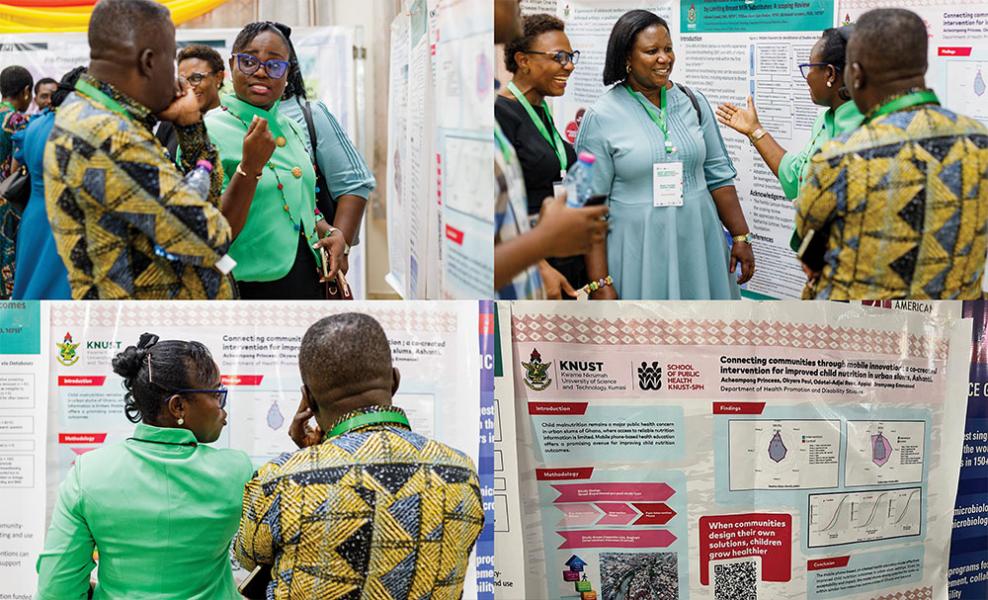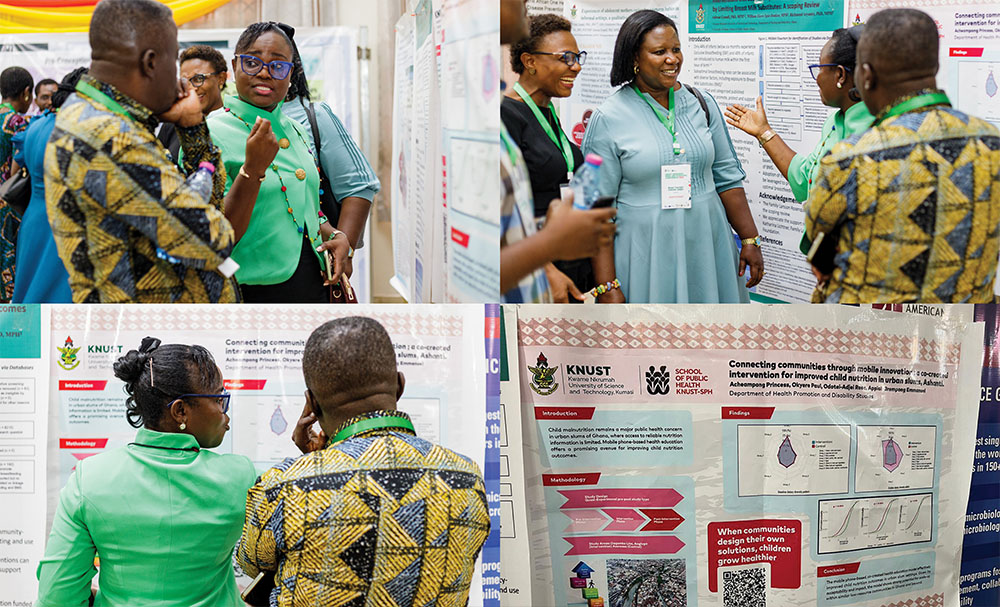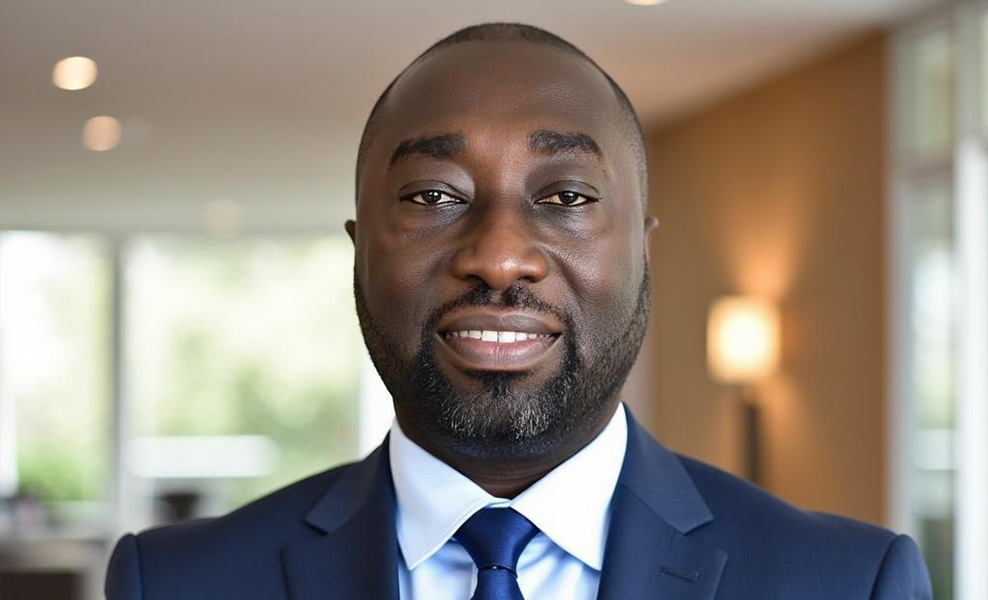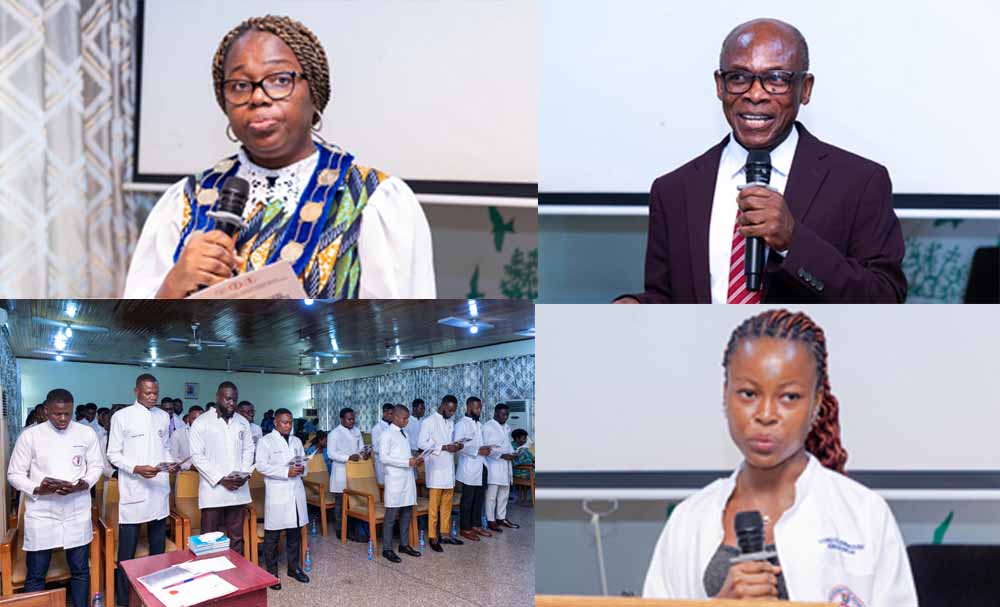SPH Researchers Use Mobile Innovation to Improve Child Nutrition in Urban Slums

As part of the ongoing KNUST Research Week and Scientific Conference 2025, faculty from the School of Public Health (SPH) showcased their research at a poster exhibition held at the Sarah Mensah Auditorium.
Dr. Princess Acheampong and team, Paul Okyere, Ross Odotel-Adjei, and Emmanuel Appiah Brempong, presented the project, “Connecting Communities Through Mobile Innovation: A Co-Created Intervention for Improved Child Nutrition in Urban Slums, Ashanti.”
Child malnutrition remains a major public health concern in urban slums of Ghana, where access to reliable nutrition information is limited
The project used mobile phone–based health education to teach caregivers in the Oforikrom Municipality practical ways to improve child nutrition.
Through co-created messages delivered via calls, dramas, and jingles, caregivers easily related to and applied the lessons.
The team took an innovative approach, partnering directly with caregivers in local slum communities within the Oforikrom Municipality to co-design a mobile phone-based education program.
Instead of a top-down approach, the team worked with the community to develop the intervention.
The result was a series of engaging mobile phone lessons delivered as dramas, jingles, and role-plays. Crucially, the nutrition guidance included practical, locally available food menus.
“We saw it as an opportunity for our department to promote health and to do meaningful research there,” said Dr. Acheampong. “Because we co-created it with them, they understood and we didn't have any follow-up loss because they were in it with us together.”
The results were clear: after six months, children in the intervention group showed a marked improvement in their nutritional status compared to the control group.
“This told us that if we co-create interventions with the communities, we are able to see impactful health outcomes in children,” Dr. Acheampong explained.
“For us, we believe that this research has set the foundation. It shows that when communities design their own solutions, children grow healthier.”









